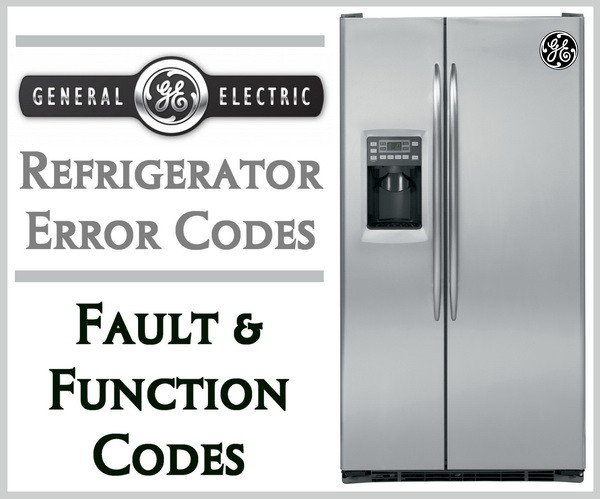
In the world of refrigerators, an error code is like a helpful notification that your appliance sends when something isn’t quite right. Think of it as your fridge’s way of whispering, “Hey, I need a bit of help here!” Each code corresponds to a specific issue, much like how a car’s dashboard lights communicate different problems. Error code E1, in particular, can be quite common in GE refrigerators. So, let’s decode this message and see what your fridge is trying to tell you.
What Does Error Code E1 Actually Mean?
So, what’s the scoop on error code E1? In simple terms, this error typically indicates a problem with the refrigerator’s temperature sensor, also known as the thermistor. Now, you might be wondering what a thermistor is. Imagine the thermistor as the thermostat’s hardworking cousin. It constantly checks the temperature inside your fridge to ensure everything is as cold as it should be. When the thermistor fails, the fridge can’t accurately measure and regulate the temperature. It’s like using a faulty thermometer to check if your oven is at the right heat—results could be quite off!
In most cases, error code E1 is telling you that the thermistor isn’t sending the right information back to the refrigerator’s control board. This could be due to a malfunction in the thermistor itself or a disconnection in the wiring. It’s akin to having a miscommunication between the brain and hand, where the signals aren’t getting through correctly. As a result, your fridge might either not cool efficiently or, in some cases, overcool.
The good news? This is generally a fixable issue. While it might seem daunting at first, resolving error code E1 usually involves checking the connections or replacing the thermistor. But let’s dive a little deeper into why this happens and how you can address it.
Common Causes of Error Code E1
You might be thinking, “Why does this happen in the first place?” Well, there are a few typical reasons why your GE refrigerator might flash an error code E1. One of the primary culprits is the thermistor itself getting worn out. Over time, just like any electronic component, it can fail due to age or frequent use. Imagine an old battery losing its charge—it’s the same concept.
Another possible cause is a loose connection. The wires that connect the thermistor to the main control board can sometimes get jostled or disconnected. This disruption is like a phone call that drops because of a weak signal; the information isn’t transmitted smoothly.
Environmental factors can also play a role. For example, excessive moisture or extreme temperatures outside the fridge can affect the internal components. If you live in a particularly humid area, this might contribute to the error. The good news is that understanding these causes puts you in a strong position to fix the problem.
How to Fix Error Code E1
Alright, here’s the deal: fixing error code E1 is often something you can tackle yourself. But first, it’s always wise to consult the user manual for your specific GE model—it’s like having a map in unfamiliar territory. A typical first step is to unplug your refrigerator. This is crucial because it’s not only a safety measure, but also a chance to reset the system.
Next, locate the thermistor. If you’re not sure where it is, think of it as playing a game of hide-and-seek. Usually, it’s tucked away in the fridge’s interior, near the coils. Check the connections and ensure the wires are securely attached. If the thermistor looks worn or damaged, replacing it is the best bet.
After you’ve made the necessary adjustments or replacements, plug your fridge back in. Give it some time to recalibrate—it’s like waking up from a nap. If the error code disappears, you’ve likely resolved the issue. If not, it may be time to call in a professional.
Preventing Future Error Codes
Of course, prevention is always better than cure. To keep error codes at bay, regular maintenance is key. It’s a bit like giving your car regular tune-ups. Inspect the thermistor and wiring periodically to ensure everything’s in tip-top shape.
You can also keep your refrigerator clean and dry. Excess moisture can be a silent troublemaker, so wiping down any spills and checking for leaks can go a long way. And remember, don’t overload your fridge. Overloading can block proper air circulation, similar to stuffing too many clothes in a washing machine.
Finally, consider investing in a surge protector. Power surges can affect the electrical components in your fridge, much like how a lightning strike can fry a computer. A surge protector acts as a buffer, safeguarding against unexpected power jolts.
In conclusion, while seeing error code E1 might initially be unsettling, understanding its meaning and taking the right actions can have your fridge back to optimal conditions in no time. Whether it’s adjusting a connection or replacing a part, you’ve now got the know-how to tackle this head-on. Cheers to a smooth-running refrigerator!
